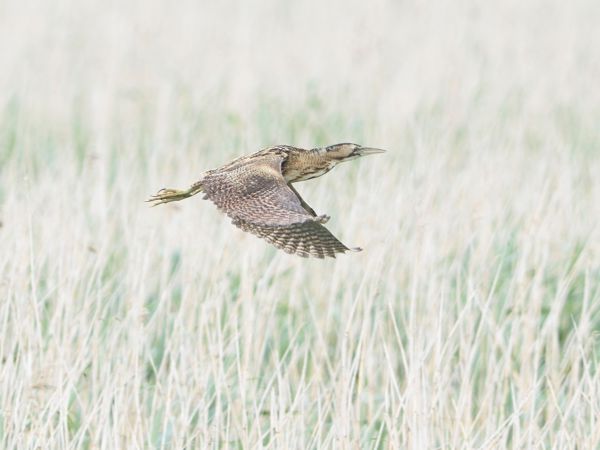Successful breeding year for rare birds in south Wales

One of the UK’s rarest and most threatened bird species has successfully bred for the third year in a row on the Gwent Levels in south Wales.
Six bittern chicks have fledged from at least two separate nests at the Newport Wetlands National Nature Reserve, making it the most successful year since they bred for the first time in over 200 years in 2020.
The wetlands are managed by Natural Resources Wales (NRW) in partnership with RSPB Cymru and Newport City Council.
Bitterns are a type of heron which live exclusively in reedbeds. The species was once thought to be extinct in the UK following years of persecution and a dramatic loss of habitat, but populations have since returned to areas where high quality reedbed habitat still exists.
A number of improvements to the wetlands over the years have helped to create a good habitat for bitterns to thrive.
Careful management of the reed beds – which make up one fifth of the reserve – have raised the water levels by half a meter, helping the bitterns to breed and keeping the chicks safe from their natural predators such as foxes.
Pools and channels have also been created throughout the reeds, which creates more reed edge for the bitterns to hunt along. Elver ladders, have also been created to allow elvers to enter the reedbeds, which are an important food source for bitterns.
Over four and a half thousand Rudd – a small surface feeding fish – which are a main food source for bitterns have also been introduced.
Kevin Dupé, Land Management Officer at Natural Resources Wales said:
It’s truly amazing to see the bittern chicks thriving at the wetlands, and a real achievement for those of us who have been involved in habitat conservation at the site for a long time.
This year we’ve also seen successful breeding numbers for mash harriers - a bird of prey -which have fledged another two chicks, bringing the total they have fledged in the past six years to 12.
Newport Wetlands are part of the Gwent Levels and are made up of a diverse range of low-lying habitats which provides an important home for wildlife as well as being a valuable green space for the surrounding communities and visitors to enjoy.
Wetlands are an important habitat in need of our help. As well as allowing species like the bittern to come back from the brink, they can also help us in the battle against climate change by storing harmful carbon and holding back flood water.
Newport Wetlands is a unique site made up of wet grasslands, reedbeds, saltmarsh and saline lagoons. An ongoing programme of conservation management by NRW helps to keep the habitat in good condition for the rare species which thrive in it.
Cellan Michael from RSPB Cymru said:
Two years ago, we learned that bitterns had nested successfully at Newport Wetlands - the first time in more than 200 years in south east Wales. This year, we’re delighted to hear the news that these striking birds have established more than one nest on the reserve and have reared six healthy chicks.
It goes to show that years of conservation efforts to create and manage the reedbeds have paid off. With bitterns now nesting at Newport Wetlands, as well as the RSPB Cymru Cors Ddyga reserve on Anglesey, it’s clear that they’re making a comeback in Wales. We hope to see more bitterns nesting at new sites across the country in the future.
Councillor Yvonne Forsey, cabinet member for climate change and biodiversity, said:
It’s fabulous to see that the conservation work at the Wetlands has been so successful, and that the Bitterns are breeding once again.
Our partnership with NRW and RSPB Cymru is proving fruitful both for wildlife and the environment and plays a part in our efforts to increase biodiversity and combat the effects of climate change in the city.
To plan your visit to the Newport Wetlands, visit : Natural Resources Wales / Newport Wetlands National Nature Reserve
